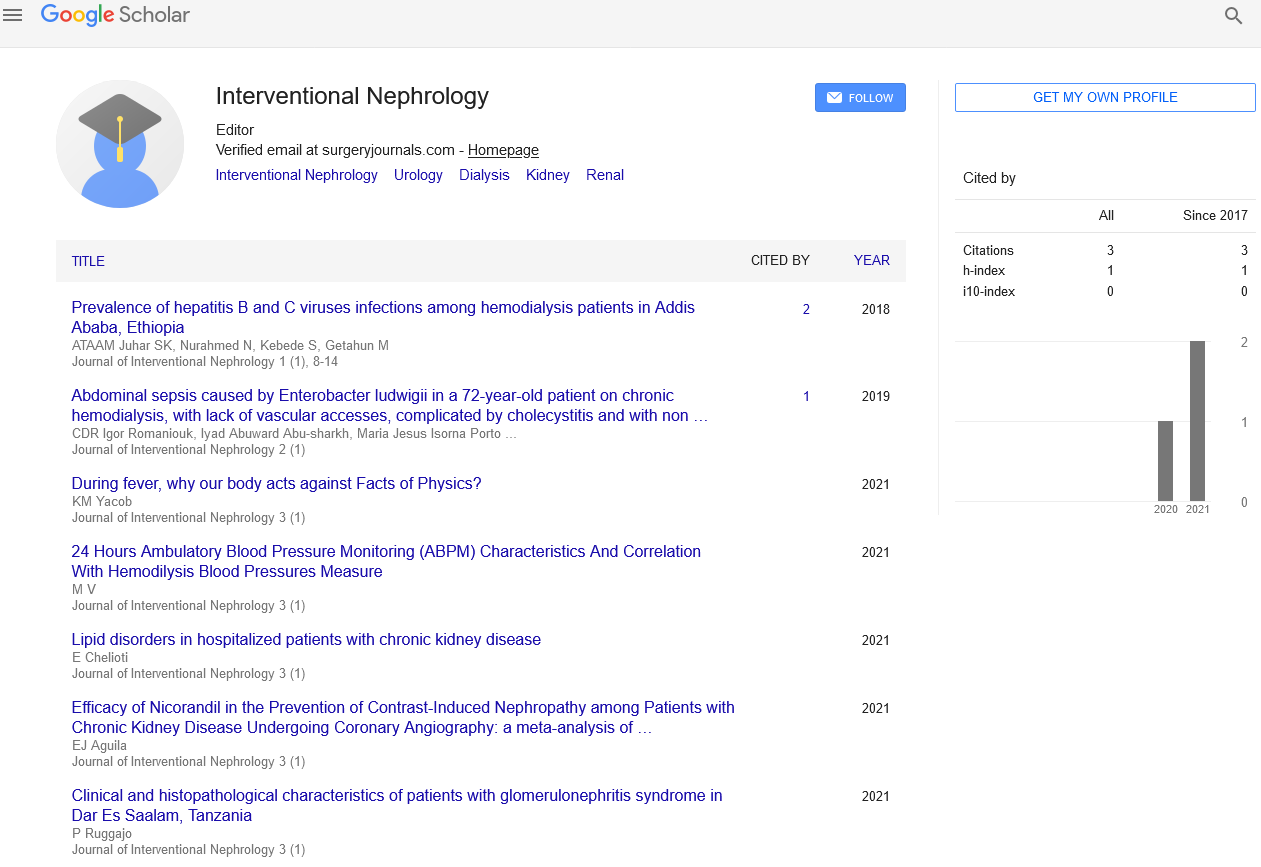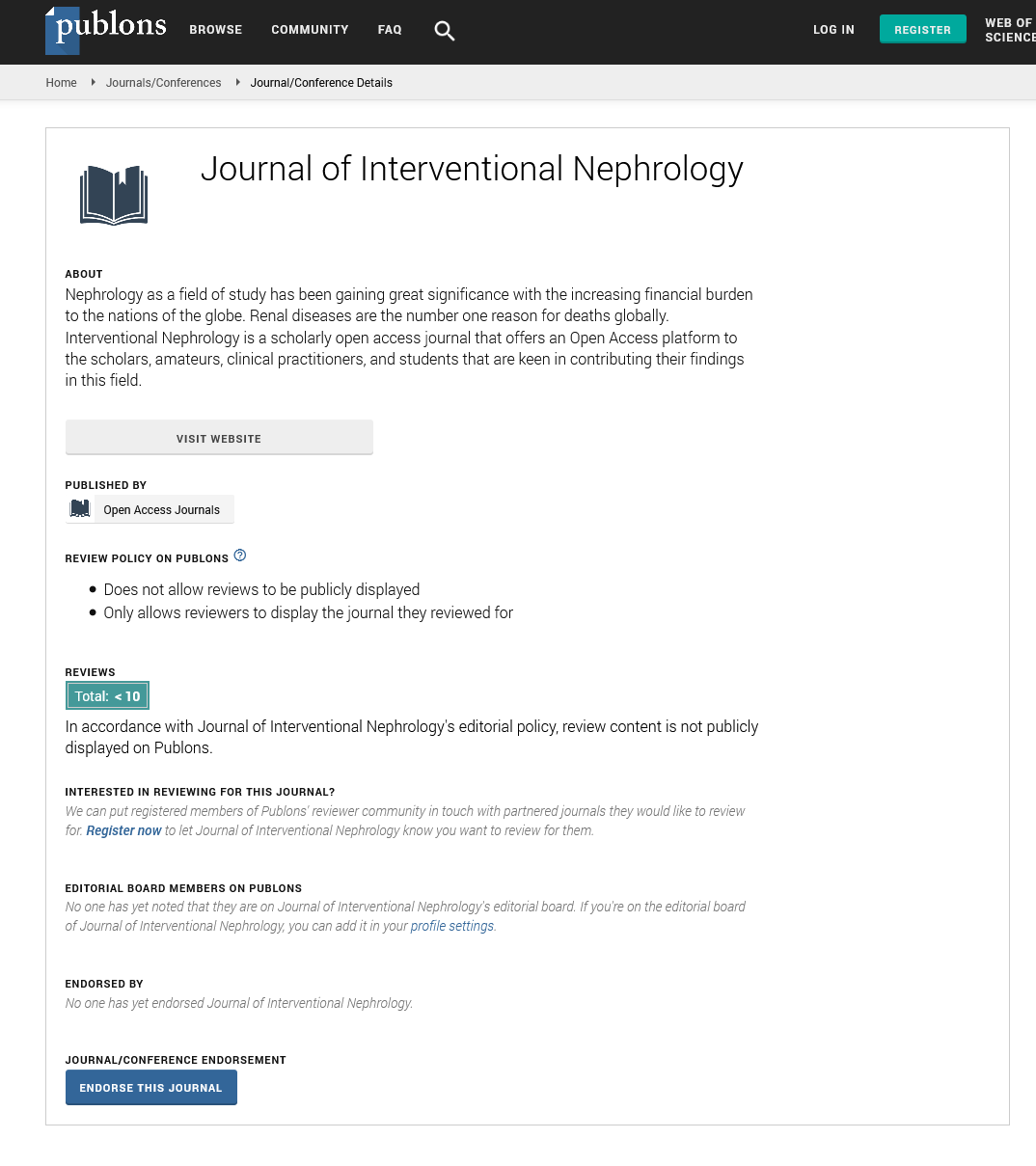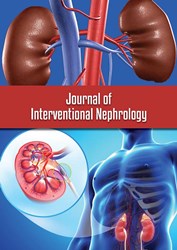Perspective - Journal of Interventional Nephrology (2024) Volume 7, Issue 2
Deciphering Renal Potassium Excretion: Unveiling Mechanisms, Regulation, and Clinical Implications
- Corresponding Author:
- Dennis Lurje
Department of Medicine,
Raffles University,
Brazil
E-mail: Dennislmsn@gmail.com
Received: 21-Mar-2024, Manuscript No. OAIN-24-130221; Editor assigned: 22-Mar-2024, PreQC No. OAIN-24-130221 (PQ); Reviewed: 05-Apr-2024, QC No. OAIN-24- 130221; Revised: 12-Apr-2024, Manuscript No. OAIN-24-130221 (R); Published: 22-Apr-2024, DOI: 10.47532/oain.2024.7(2).252-253
Introduction
Potassium, an essential electrolyte, plays a critical role in numerous physiological processes, including muscle contraction, nerve function, and cardiac rhythm. Renal potassium excretion stands as a key mechanism for maintaining potassium balance within the body. In this comprehensive article, we explore the intricate mechanisms, regulatory pathways, and clinical significance of renal potassium excretion.
Understanding renal potassium excretion
The kidneys meticulously regulate potassium levels by adjusting potassium excretion along the renal tubules. Renal potassium handling primarily occurs in the distal nephron, encompassing the distal convoluted tubule, connecting tubule, and collecting ducts, where potassium secretion and reabsorption are finely regulated.
Description
Mechanisms of renal potassium handling
Potassium secretion: Potassium secretion in the distal nephron is mediated by the principal cells of the collecting ducts. This process involves the transport of potassium ions from the cytoplasm of principal cells into the tubular lumen via potassium channels (ROMK channels) and the basolateral Na+/K+ ATPase pump.
Potassium reabsorption: In addition to potassium secretion, the kidneys also reabsorb a portion of filtered potassium to maintain potassium balance. Potassium reabsorption occurs primarily in the proximal tubule and thick ascending limb of the loop of Henle, where passive and active mechanisms facilitate potassium reabsorption back into the bloodstream.
Regulation of renal potassium excretion
The regulation of renal potassium excretion is governed by several factors, including dietary potassium intake, aldosterone, acid-base status, and tubular flow rate:
Aldosterone: Aldosterone, a hormone produced by the adrenal glands, plays a central role in regulating potassium excretion by enhancing potassium secretion in the distal nephron. Aldosterone promotes potassium secretion by increasing the activity of the Na+/ K+ ATPase pump and stimulating the synthesis of potassium channels in principal cells.
Acid-base status: Acid-base disturbances, such as metabolic acidosis or alkalosis, can influence renal potassium handling. Acidosis enhances potassium secretion in the distal nephron, while alkalosis reduces potassium excretion, leading to alterations in serum potassium levels.
Tubular flow rate: Changes in tubular flow rate, such as increased urine flow, can affect potassium excretion by altering the delivery of potassium to the distal nephron and modulating potassium secretion by principal cells.
Clinical implications of renal potassium excretion
Hyperkalemia: Impaired renal potassium excretion can lead to hyperkalemia, a condition characterized by elevated serum potassium levels. Hyperkalemia can result from various etiologies, including renal dysfunction, potassium-sparing diuretics, or aldosterone deficiency.
Hypokalemia: Conversely, excessive renal potassium excretion can lead to hypokalemia, a condition marked by low serum potassium levels. Hypokalemia may occur due to increased aldosterone activity, diuretic use, or renal tubular disorders affecting potassium handling.
Diagnostic evaluation of renal potassium handling
Assessing renal potassium handling involves evaluating serum potassium levels, urinary potassium excretion, and urinary potassiumto- creatinine ratio. Additionally, renal imaging studies and electrolyte panel assessments may be performed to identify underlying etiologies contributing to potassium imbalances.
Therapeutic interventions
Management of potassium imbalances entails correcting underlying etiologies and implementing targeted interventions to restore potassium balance. Therapeutic strategies may include dietary modifications, potassium supplementation or restriction, pharmacological agents (e.g., potassium-sparing diuretics, potassium binders), and addressing contributing factors, such as renal dysfunction or hormonal abnormalities.
Conclusion
Renal potassium excretion plays a crucial role in maintaining potassium homeostasis and electrolyte balance within the body. Through a nuanced understanding of the underlying mechanisms and regulatory pathways governing potassium handling in the kidneys, clinicians can effectively diagnose and manage potassium imbalances, striving to optimize patient outcomes and prevent associated complications.


